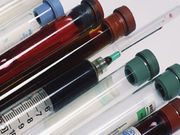Sodium level corrected according to serum glucose concentration, a better measure
FRIDAY, March 25, 2016 (HealthDay News) – A slightly lower serum sodium concentration within the normal range is a major risk factor for mortality in elderly adults, according to a study published in the March issue of the Journal of the American Geriatrics Society.
Shin Y. Ahn, M.D., from Seoul National University Bundang Hospital in South Korea, and colleagues randomly selected, community-based 949 elderly adults with a corrected serum sodium level between 135.0 and 145.0 mEq/L from the Korean Longitudinal Study on Health and Aging cohort. Patients were stratified by sodium level: 73 in Group 1 (sodium 135.0 to 138.0 mEq/L), 635 in Group 2 (sodium 138.1 to 142.0 mEq/L), and 241 in Group 3 (sodium 142.1 to 145.0 mEq/L).
The researchers found that deaths significantly varied by group: 34 deaths in Group 1, 124 in Group 2, and 52 in Group 3 (P < 0.001). A 2-mEq/L higher sodium level reduced the risk of death by 14.9 percent (P = 0.048). Group 1 had risk of mortality that was 2.7 times as high as that of Group 2 (P < 0.001). Those with a measured sodium level of ≤138.0 mEq/L and a corrected sodium level >138.0 mEq/L had a better survival rate than those with a measured sodium level of ≤138.0 mEq/L and a corrected sodium level of ≤138.0 mEq/L.
“Sodium level corrected according to serum glucose concentration was a more meaningful risk factor than measured sodium level,” the authors write.
Copyright © 2016 HealthDay. All rights reserved.








